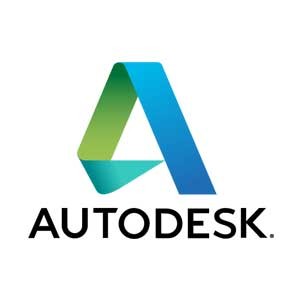

Autodesk Revit is widely regarded as one of the best software tools on the market that can help with building information modeling. It’s great for contractors, designers, engineers, architects and people that need to design real life systems with amazing accuracy and extraordinary value. It always helps to buy Autodesk Revit online, because it’s a very powerful and comprehensive tool, it delivers great value, and the results can easily be adjusted to your requirements.
It never hurts to focus on the process from the beginning and up until the end, and that’s where the Autodesk Revit annual license shines. Over the years, Revit has quickly become one of the most comprehensive and excellent tools for building modeling. It’s very complex, and it can also work well with other Autodesk tools as well. It works with Dynamo, Insight or ReCap, which is a crucial tool to take into consideration.
-
Avast Premium Security 1 Pc 1 Year
AED 39.00 -
Panda Dome Complete 1 Device 1 Year
AED 59.00
As of my last update, Autodesk Revit continues to evolve with each version release, offering new features and improvements. Here are some common features you might find in the latest version of Autodesk Revit (depending on the version released around mid-2024):
1. Generative Design: Integration of generative design tools allows for exploration of design options based on defined goals and constraints.
2. Enhanced Collaboration: Improved collaboration tools facilitate better coordination among team members, including cloud-based model sharing and coordination workflows.
3. Performance Improvements: Each new version typically includes optimizations to enhance software performance, such as faster loading times, improved rendering speeds, and smoother navigation within large models.
4. BIM 360 Integration: Tighter integration with Autodesk's BIM 360 platform for improved project management, document management, and collaboration in the cloud.
5. Advanced Steel Connections: More robust tools for modeling and detailing steel connections, enhancing the accuracy and efficiency of structural design workflows.
6. MEP Enhancements: Updates to MEP (Mechanical, Electrical, and Plumbing) design tools, including improved workflows for duct and pipe modeling, electrical system design, and analysis.
7. Architectural Modeling Enhancements: New features for architectural modeling, such as enhanced wall types, curtain walls, and detailing tools.
8. Point Cloud Support: Continued improvements in handling point cloud data, allowing for better integration of scanned data into the design process.
9. Documentation and Annotation Tools: Enhancements in documentation tools, including automated annotation, improved schedules, and better control over detail views.
10. API Enhancements: Updates to the Revit API (Application Programming Interface) for developers, enabling more customization and automation capabilities.
System Requirements
Windows
Operating System:
- Microsoft Windows 10 version 21H1 or later (64-bit)
- Windows 11
Processor:
- 2.5 GHz or faster (4+ GHz recommended)
- Multi-core processor with SSE2 technology
RAM:
- 16 GB minimum
- 32 GB or more recommended for larger projects
Storage:
- 30 GB of free hard disk space (SSD recommended for better performance)
Display:
- 1920x1080 resolution display (minimum)
- True Color (24-bit)
Graphics Card:
- DirectX 11 compliant GPU with 4 GB of VRAM (8 GB or more recommended for complex 3D models)
- NVIDIA or AMD graphics card with hardware acceleration support
- For optimal performance, using a certified graphics card for Revit is recommended
Additional Requirements:
- Internet connection required for software download, activation, and access to cloud-based features
- For detailed rendering and visualizations, a dedicated graphics card with higher VRAM is beneficial
General Requirements
- Input Device: A pointing device, such as a mouse or tablet, is required.
- Browser: For cloud features and services, a web browser is required (latest versions of Google Chrome, Mozilla Firefox, Microsoft Edge, or Safari).

















